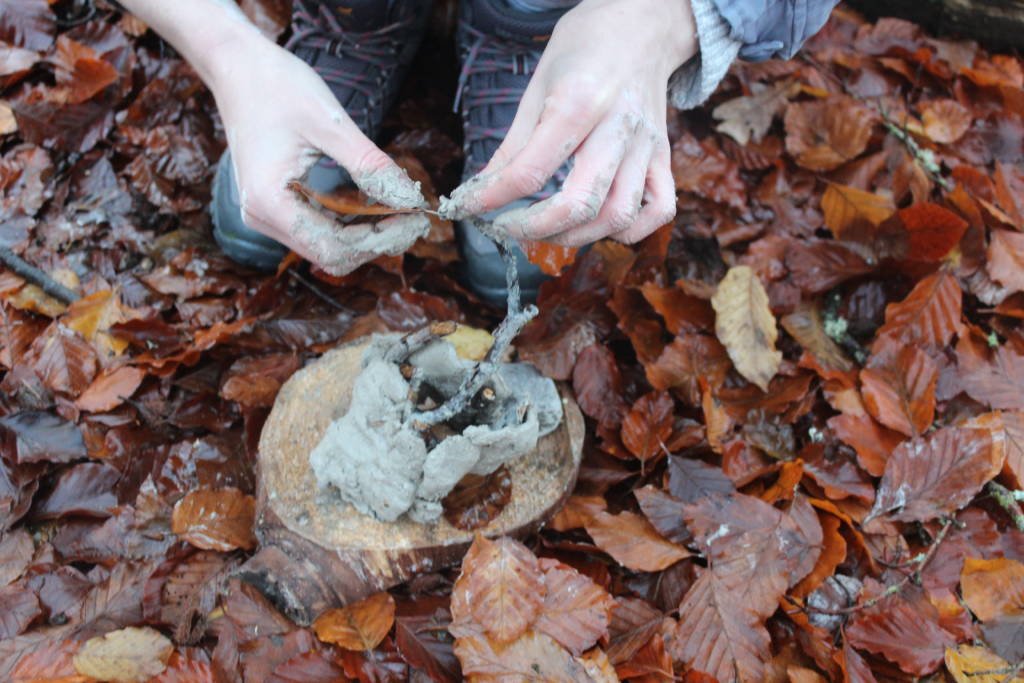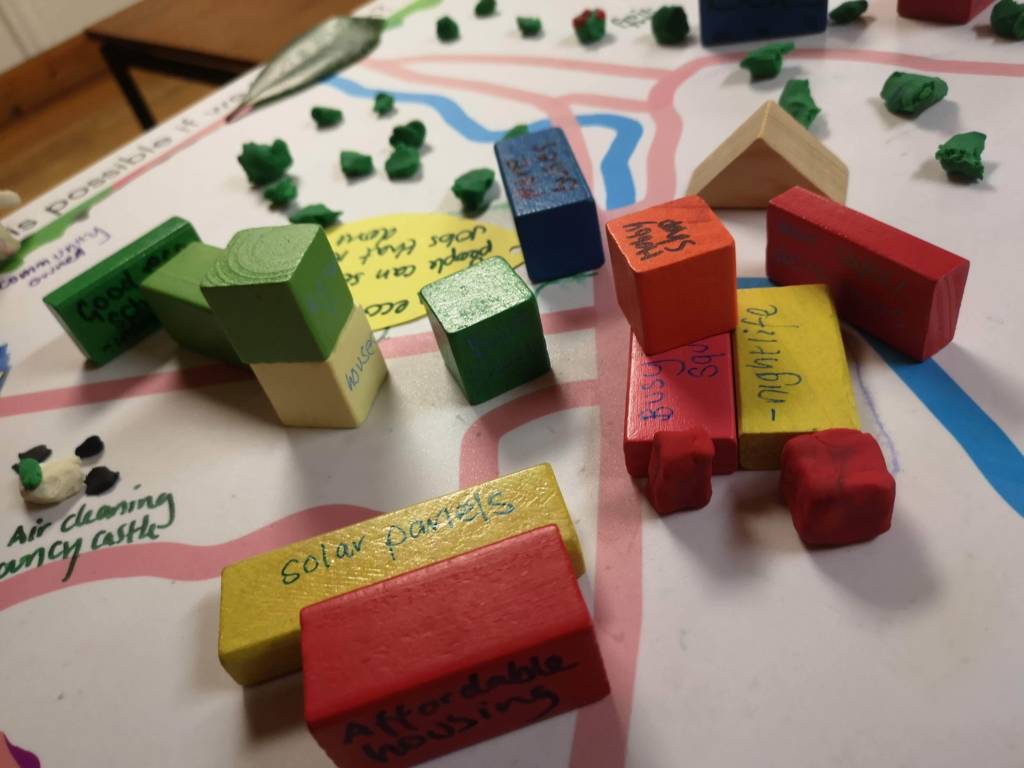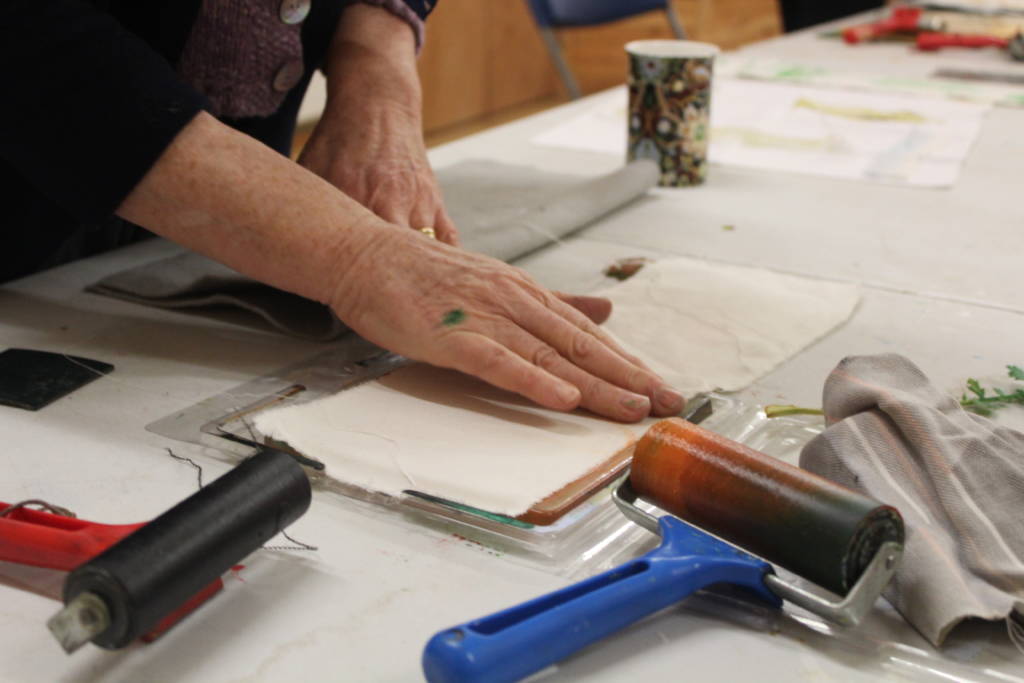
16.12.21
CULTIVATE is a regional leadership programme for Creative Practitioners and communities to collaboratively engage, create and produce locally relevant work, with a climate and social justice lens, across the Tay region.
Now halfway into their commission, the Creative Practitioners have been invited to share more about their journey so far, and how they see their project evolving in collaboration with communities.
Nicky shares her experience of meaningful time spent with the Alyth community, and how she has been building on the strong networks that already exist, using creativity and play to imagine the future with people in a place where the climate crisis is already acutely felt.
As a visual artist, community worker and generally curious human, questions have always played a central role in my creative and professional process:
What if…? How do we….? Why does…?
Questions have also defined my experience as a Creative Practitioner with CULTIVATE:
How do we use play and creativity as a vehicle for exploring something as big and challenging as climate change? How do we balance urgency with sensitivity in a community which is already directly affected by climate change? How does a small community make space for all the diverse voices that exist on the challenges affecting them and the changes that are to come?
These are just some of the questions I’ve been grappling with in my role in Alyth, where I’ve been working with the Cateran Ecomuseum and Alyth Development Trust. I certainly don’t feel I have answers to share on these big questions, but exploring them alongside residents of a rural community that is active, creative and playful has been an insightful experience.

In my role, I’ve spent the last 3 months connecting with people in Alyth, finding out their views and ideas on what gives life to this Perthshire village, and what the future of their place might look like if that life is sustained and regenerative action is taken. Working with the guiding principle of this being a conversation for everyone, I wanted to create space for people to think ‘that’s for me, that’s something I could get involved in’.
On this basis, I’ve used a bricolage approach—when something, material or immaterial, is constructed by using whatever comes to hand—tailoring a range of activities and questions arising from opportunities and resources available, in order to connect with people from across the community in ways that resonate with them. Some of the activities we’ve used have worked well in providing insight into what matters to the community and what their vision is. Other activities haven’t succeeded so well in achieving that, although they have hopefully achieved other outcomes, like simply getting creative and playful together.
Alongside this bricolage approach, my own background, and Alyth’s love of games that is embodied in the fabulous GameSquare, play felt like an important principle to bring into this project. In previous roles (such as when I worked as an outdoor playworker), I’ve been inspired by Simon Nicholson’s loose parts theory–the idea that “in any environment, both the degree of inventiveness and creativity and the possibility of discovery, are directly proportional to the number and kind of variables in it”. I was keen to explore how this theory could help encourage imaginative approaches for people of all ages. These ideas were incorporated through the use of both pop-up activities using the Imaginarium—a playful portable postbox built and decorated by young people with a range of creative materials—and outdoor workshops, which have offered time to play with natural materials.
Making together has also been a strong ingredient in the process, with the idea that making in company with one another can be a powerful experience. Often asking people to share experiences and ideas directly is difficult and people feel put on the spot. Inviting individuals to work alongside each other and using shared materials sparks a different, more gentle and often more insightful kind of sharing. These experiences were some of the most special moments in the project, including making with natural materials in the Den, building and designing with young people, and printing with found and shared objects on textiles.

As with any project that involves creativity and community, we have had our share of challenges; some foreseen whilst others were totally unexpected.
One of the challenges that we’ve faced both practically and in terms of the conversations we are having, is the very real impact of flooding here in Alyth. This has required us to adapt the locations and timings of activities; coincidentally, Alyth flooded the day before COP-26 started. It has also required sensitivity in terms of the chats we are sharing with residents and a recognition that climate change is strongly visible in Alyth—this reality makes both the specific, local and wider themes emotive and worrying for many. Holding the hearth for people as they grapple with these issues has been an important element of the project, but it is always hard to feel you’ve given enough space and time to people’s experiences and concerns.
A familiar challenge for any artist, another struggle for me personally, has been reigning in my enthusiasm. I am a seed-sower—I love that moment of planting something and then seeing what it becomes. But, just like my greenhouse in April, it’s been a challenge to keep all the seeds of ideas alive and nurturing them into something that can grow. Having the time and energy to keep things moving has not been easy, but it’s been great to see shared enthusiasm for the different ideas and outcomes.
As a visual artist, it has felt important to use visual tools and materials to make together and to share ideas. Whilst I’ve always been a magpie, holding onto and reclaiming materials for parts of my own practice, learning how to do this at a larger community scale and in a rural area has been challenging. However, over the course of this first half of the project, I’ve become much better at reusing first and understanding what’s required for this approach. Firstly, letting my activities be led by what’s available on Freecycle—hence our use of an old kitchen for the Imaginarium. Secondly, local charity shops and the fabulous Nest Creative Space in Blairgowrie. And thirdly, making sure to plan activities further in advance to allow time for scouring second-hand stuff and receive them on time has helped. Whilst this has all been a learning curve, I feel it’s really influenced my personal practice, as well as my approach to life more generally—with the festive season upon us I am doing my best to avoid buying new, as much as possible!
The final challenge for the project was that talking about the future did not come easily to the community of Alyth. Although there was some encouragement to think outside the box through activities that help activate people’s imagination, there were still limits to what they felt able to imagine. Stories, play and humour helped—it wasn’t always easy, but the responses we gathered in the end did range from realistic and achievable to the truly magical!

Whilst discussions about exactly what the next phase of the project might involve are ongoing, there are a few strands we are working towards or exploring. Our Fabric Futures sessions, proposed by a couple of community members, will continue with two more sessions in the new year—and hopefully will have a life beyond CULTIVATE. We’ll also continue to work with Alyth EcoKids and Alyth Youth Partnership on creating a Climate Action Resource Library at the youth hub. Another potential creative outcome of the project we are as yet undecided about could be a ‘community tea set’, which would capture the ideas and concerns of community members, and can be collectively used as a vessel for warm drinks and collective conversations that are both challenging and hopeful.
CULTIVATE is a pilot project, which engages communities with climate justice through creativity and peer-education. We’ll be sharing insights into each of our first six Creative Practitioner commissions over the coming weeks. Read more about our Community Partners and the six commissions.

If you would like to support us in creating even better content, please consider joining or supporting our Amps Community.